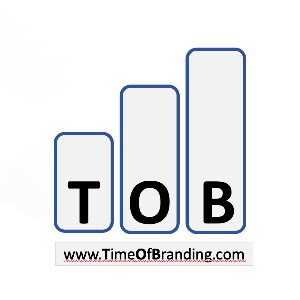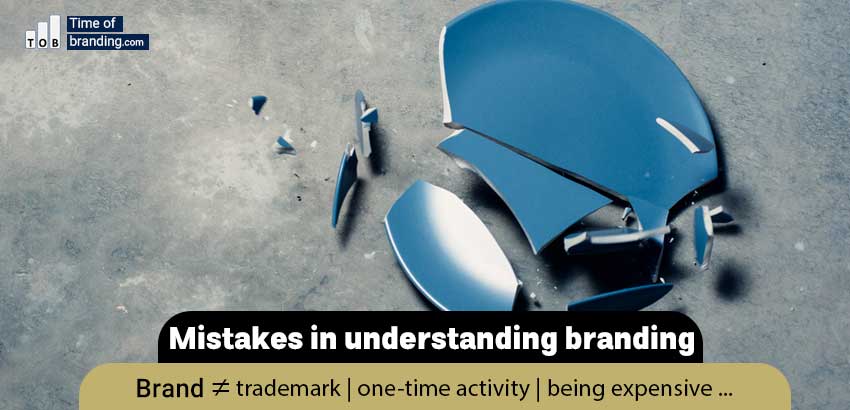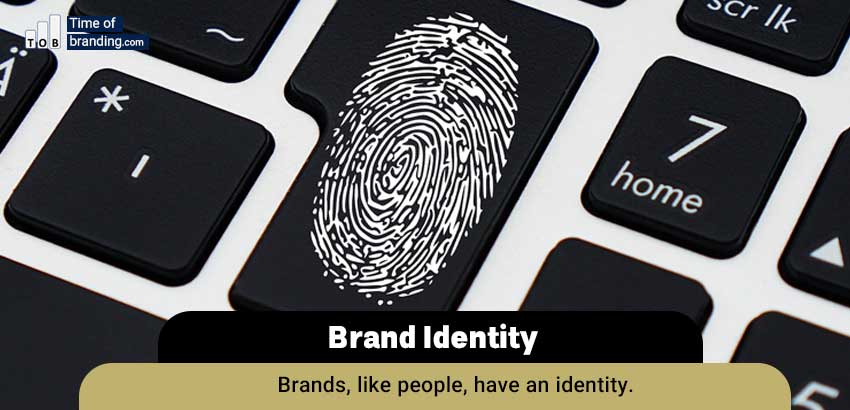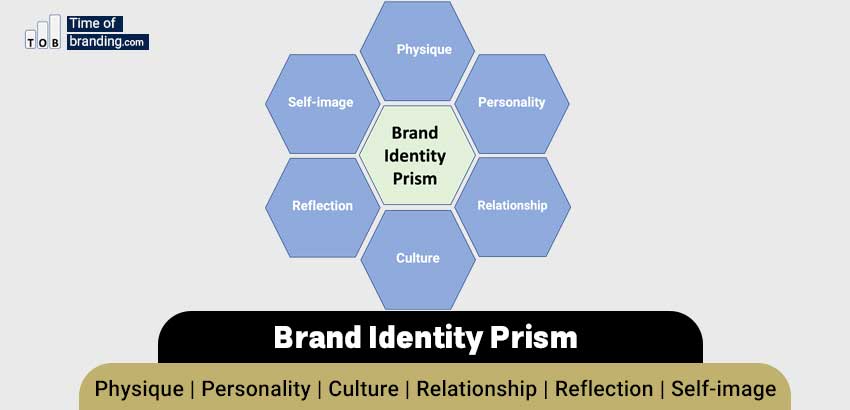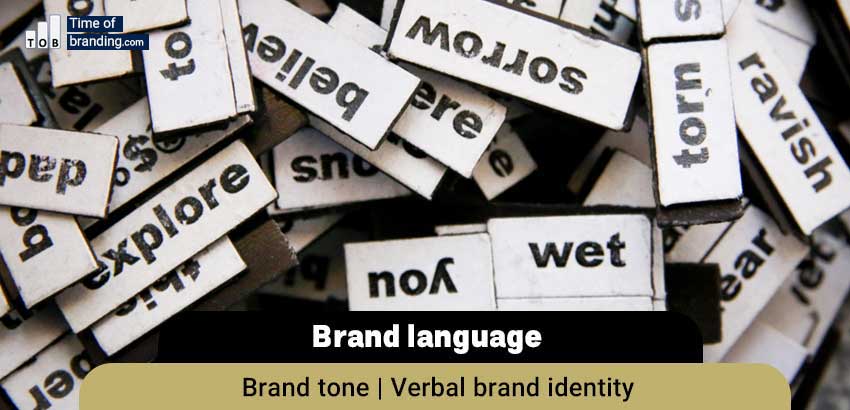One of the hallmarks of brand discussion and branding is that we all have backgrounds on these terms.
In fact, branding has become part of our everyday words and many people use these words without being very familiar with the definitions and concepts in this field.
Therefore, it is important to talk about common mistakes in understanding the concept of brand.
Of course, it should be emphasized that there are many differences in the definition and meaning of concepts related to the brand.
Even on the definition of the word brand, there is not much consensus (Chapter 1 of Kaffferr book, The New Strategic Brand Management). So it’s natural that making a “list of common mistakes in understanding the brand concept” is not so simple.
For this reason, in this articles (lesson 2 of branding roadmap), we have tried to point out only the ones on which most researchers, writers, and brand experts agree.
Brand is different from trademark
You may own a big brand, but you don’t have a trademark. Many greats, artists, writers, and celebrities are big personal brands that often don’t have registered trademarks.
Alternatively, you may register a trademark for yourself or your product.
But don’t be considered a brand. Because the brand is formed in the mind of the audience and not with the permission of the government and official legal registration.
Anyone can have a trademark for a small fee. It is enough to design a graphic sign for yourself and register it easily in any country you are in. But with this you still don’t have a brand, just a registered trademark.
Of course, there are many brands that have registered trademarks. But it is wrong to assume that the concept of brand and the concept of trademark are “necessary” or even worse, “synonymous”.
Branding is not a project or a one-time activity
Sometimes it is thought that branding is something like executing a project. It means that you can consider a budget and formulate a plan for branding and start this activity at a specific time and finish it at a specific moment.
Of course, there is no doubt that all brands, from the smallest to the largest, at some point implement a campaign as a project to strengthen and stabilize and perhaps change the position of their brand.
But this is not all about branding.
Branding is a permanent and full-time activity that involves the owner of a brand forever and at all times. You may do it in a more intensive and targeted way at times, but at no point will the process of doing branding activities be removed from your to-do list.
A brand is not a message that you push into the ears of your audience with the force of advertising. Rather, it is an image that is formed in the minds of the audience from the set of decisions, choices, activities, orientations, and your products and achievements.
Branding cannot be summed up in one person or department
Many organizations and businesses (especially large organizations) appoint a brand manager or consider a sub-department called “branding” in their marketing unit and think that this is the end of it.
But branding is a pervasive activity and involves the entire organization. Suppose a manufacturing brand recognizes itself as “safety”.
This safety concern should show itself in the supply of raw materials; must be seen in the production line; should be considered in quality control; Must be seen in after-sales service; And in short, every organizational activity should put safety at the top of their activities.
From this point of view, branding can be considered similar to strategy. Branding, like strategy, usually has its own guardian, and a person or department takes responsibility for its coordination and follow-up.
But all parts of the organization and business must be aligned with this person or department so that we can talk about something called brand or strategy.
Not all brands are necessarily branded with “good reputation”.

Many of us use this term: “That person or that company has now become a brand.”
Usually, in such a sentence, the brand is used with a positive meaning (known and has a good reputation). But remember that branding in the general sense can also have a negative form.
Even a seasoned thief or a criminal by nature can be assumed to be the owner of the brand.
Bin Laden and ISIS are undoubtedly considered brands in the field of international terrorism. The sign of their branding is that many people still describe their brutal and petrifying behavior with ISIS.
Being a brand is not synonymous with being expensive
Many of us have a hidden assumption in our minds and that assumption is: “To be a brand is to be expensive.”
There is no doubt that there are many expensive brands in the world, such as Ralph Lauren, Rolls Royce, Rolex, Gillette and Apple. But remember that no one said that brands have to be expensive.
By the way, many brands are branded by being cheap or thrifty. Zara, Toyota, Swatch and Huawei are also brands and they happen to be considered powerful brands.
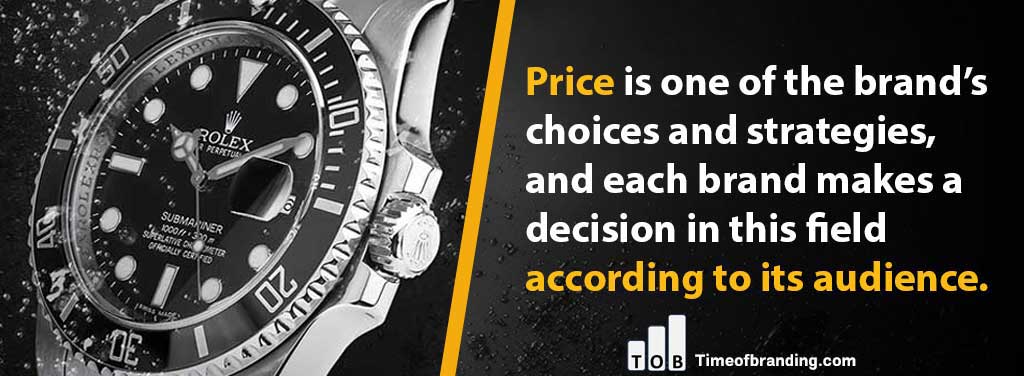
Pricing and choosing the right price range is one of the brand’s choices and strategies, and each brand makes a decision in this field according to its audience.
Having a brand is more than having a slogan
In recent years, the fever of slogan definition has risen very high. Slogans that often do not match the values, principles, mission and vision of brands; Rather, they are just beautiful and harmonious sentences that have been created with the name of the brand.
We cannot deny the fact that defining and defining a slogan is one of the most common tasks in branding and many big brands in the world have their own slogans.
But we must remember that having a slogan is a very small part of the branding process, which becomes meaningful after defining the position and mission of the brand.
In addition, the slogan is useful when it is aligned with the values, mission and value chain of a brand. In other words, a brand should define a slogan for itself that makes sense only in conjunction with its own brand.
If you see that the slogans of several brands (e.g. bank brands) can be easily exchanged with each other and nothing important happens, then it must be said that slogan making was pointless and ineffective and practically failed to fulfill its role in the branding process.
In the process of branding, you are not supposed to introduce yourself to “everyone”.
Suppose you are a publisher of medical books.
In order to have a strong brand, it is not necessary that everyone in the community has heard your name; It is not even necessary that all readers or even all doctors know you.
A powerful brand is a brand that is known in the space of potential customers and target audience.
It is necessary that students and doctors who are interested in learning know you and consider you different from others, as well as that experts and influential people in the field of medicine encourage others to buy and study your products and consider you distinct and privileged.
And it makes you a strong brand. Therefore, everyone everywhere is not supposed to know you and talk about you.
Today, this mistake can be seen very much that in branding, busy media are preferred to related media and branding enthusiasts forget that they should strive to be seen, heard and known among the “target audience”. Not anywhere and not with any group of people in the society.
